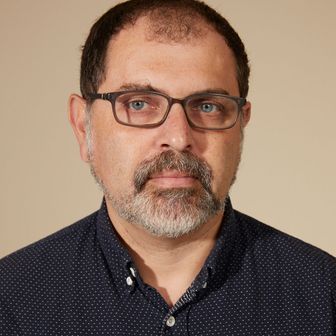
The first thing Dani Shapiro thought of when she heard that the Virginia Tech gunman, Cho Seung-hui, had been taking creative-writing classes was the time she became so frightened by a student’s fiction that she had a plainclothes guard stand outside one of her classes at NYU. “The work was scary,” says Shapiro, a novelist who now teaches at Wesleyan. “His behavior in class was scary”—and the personal notes he sent her seemed menacing, too. “He felt like someone who was explosive. But I remember wondering if I was overreacting.”
Perhaps she was (and the student eventually was persuaded to leave the program), but Cho’s relentlessly angry, violent play Richard McBeef, which quickly circulated on the Web after the shootings, raised the question of what crazy writing really says about the mental state of the author, especially if he’s a student. Novelist Sam Lipsyte, a professor at Columbia, said he’d read Cho’s play, and based on “that alone, I wouldn’t be contacting psych services. It would have made me think he was a sad and angry kid.”
Everyday writing workshops can be crucibles of postadolescent psychological distress. “You have your depressives, you have your anxiety disorders—it’s not biology class,” says Shapiro, who has subtly suggested counseling for students. Writer Josh Furst teaches at Pratt. “Art schools are a notorious magnet for troubled kids,” he says. “I’ve had a lot during my tenure. And most of what they write is very autobiographical.” That can mean child abuse and drugs, or—as once happened—looking on awkwardly as two recent exes read their own separate takes on the same breakup.
Deborah Landau, the head of NYU’s writing program, taught a New School class in which a student read poems about raping women. “We romanticize writers as sensitive—violent, but violent toward themselves,” she says. “That’s the myth.” But most of the time it’s accurate. Mark Slouka, who now chairs the writing department at the University of Chicago, had a student at Columbia who wrote in detail about shooting up heroin. He talked to him privately, and the student said he was sober, in rehab. Slouka told him his door was always open. Three weeks later, the student died of an overdose. “It broke my heart,” he says, but he believes he took the right approach. “The trick is, for anybody teaching writing, not to just read the work, but read the writer. It’s the combination of what you have on paper and what you see in the classroom that will indicate trouble.”
So lurid stories alone needn’t send up a red flag. “We don’t expect Bret Ellis to go on a shooting spree,” says Lipsyte. “We recognize his satire and his talent.” So do the college writers who emulate him. Erika Meitner, who has taught writing in New York public schools and prisons, and begins a gig at Virginia Tech in the fall, has seen plenty of violent fiction. “You always get a few students who are writing like Quentin Tarantino.” It can be a pose of sorts. But teachers have to watch for how it interacts with their behavior. And, it seems, Cho behaved as sociopathically as he wrote.
Meitner wonders what creative-writing courses will look like at Virginia Tech next year. “Will students be hesitant to write about something? Will professors be reading for psychological problems? I don’t know the answer to that.” Lipsyte worries about “people feeling that they couldn’t take artistic gambles for fear of being misread,” but concludes that, as with the usual media frenzy, “we may go through a period of moral panic about it and then move on to the next problem.”
With Miriam Datskovsky, Janelle Nanos, and Emma Pearse.
Have good intel? Send tips to intel@nymag.com.
